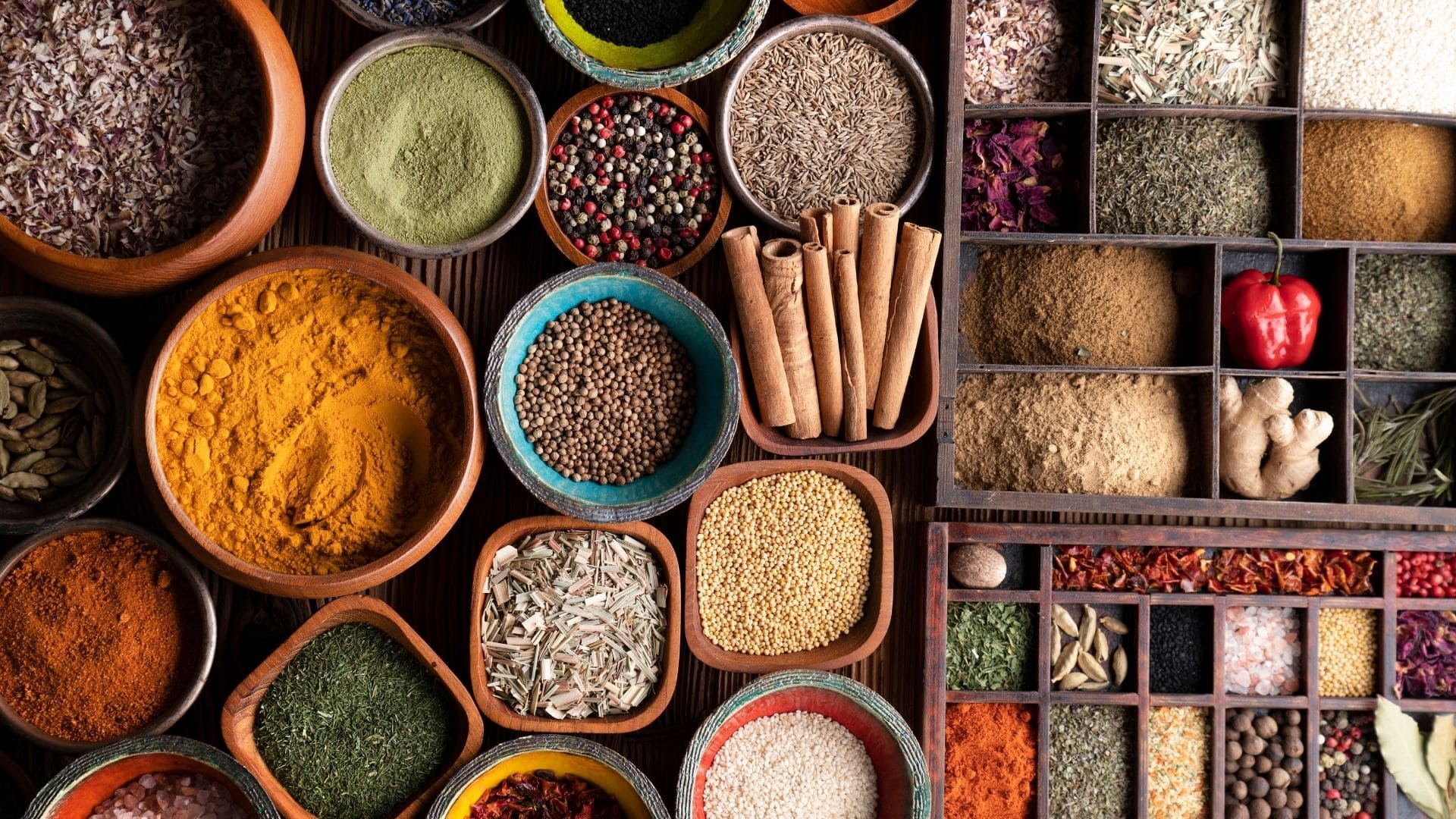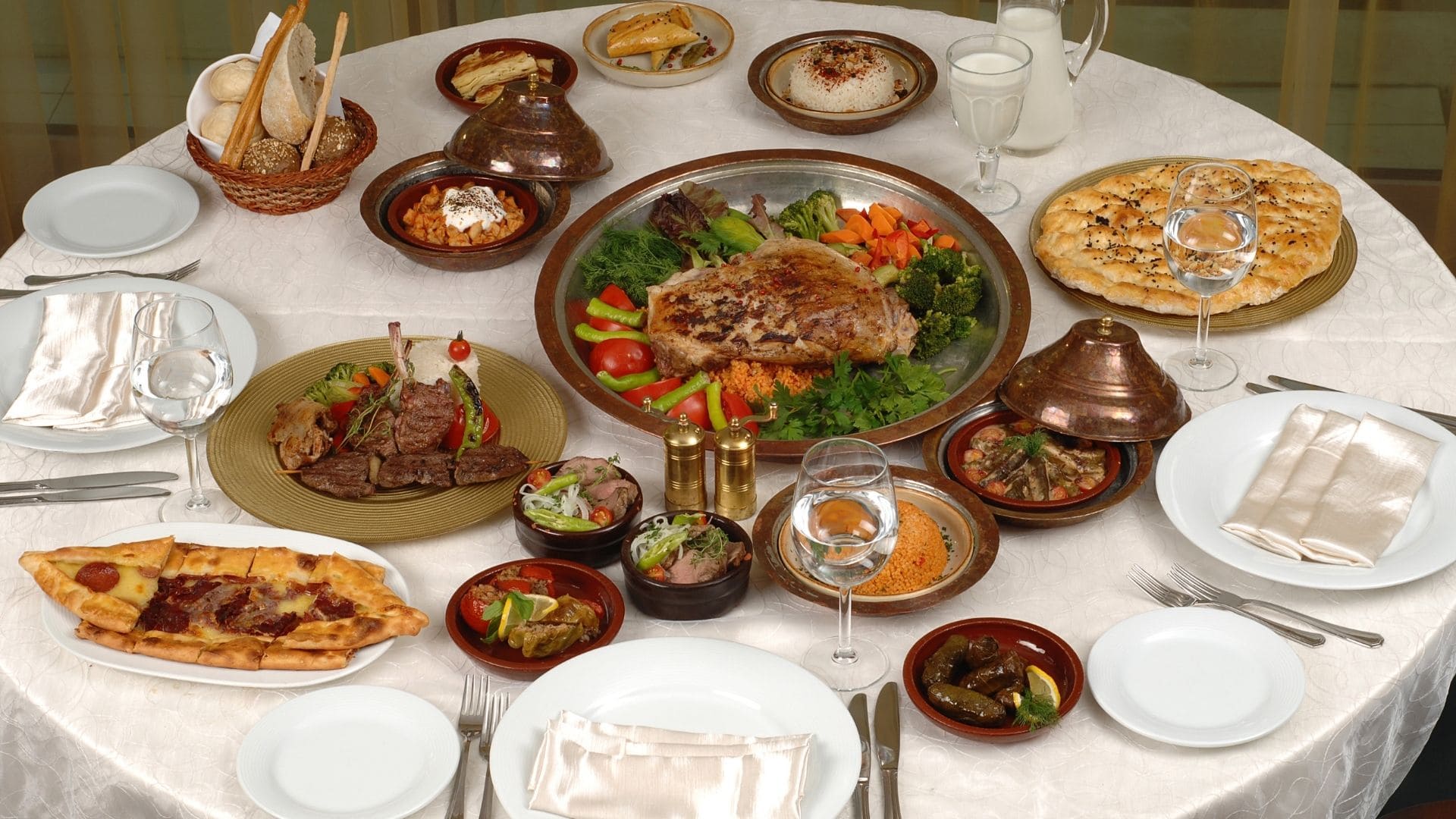Turkish cuisine is renowned for its rich, diverse flavors, which are achieved through the skillful use of various spices. These spices not only add depth and complexity to dishes but also reflect the cultural heritage and culinary traditions of Turkey.
Blog Contents
ToggleThe Place of Spices in Turkish Cuisine
Spices play a crucial role in Turkish cuisine, enhancing the flavors of both everyday meals and festive dishes. Turkish cooking often involves a blend of spices that create a balanced and aromatic profile. These spices are used not just for their taste but also for their health benefits. The traditional spice bazaars in Turkey, such as the famous Spice Bazaar in Istanbul, are a testament to the cultural importance of these culinary ingredients.
Historical Influence: The use of spices in Turkish cuisine can be traced back to the Ottoman Empire, where the palace kitchens experimented with and perfected the art of spice blending. The empire’s vast reach brought a variety of spices from different regions, enriching Turkish cuisine. Spices like cumin, coriander, and cinnamon became staples, influencing both the culinary and cultural landscape.
Culinary Techniques: In Turkish cooking, spices are often used in marinades, rubs, and sauces. They are also sprinkled over finished dishes to enhance flavor. For example, a typical Turkish kebab is marinated in a blend of spices before being grilled to perfection, while a dish like “Pilav” (rice pilaf) is often cooked with a mix of spices that infuse the grains with rich aromas.
At Mama Fatma Restaurant in Toronto, Ontario, Canada, you can experience the authentic use of these spices in traditional dishes. Their “Adana Kebab,” for instance, features a blend of red pepper flakes, cumin, and sumac, giving it a distinctive and delicious flavor.

What are the Special Spices for Turkish Cuisine?
Certain spices are quintessential to Turkish cuisine, each bringing its own unique flavor and aroma. These spices are not only common in Turkish households but also revered in Turkish culinary traditions.
- Sumac: Sumac is a tangy, lemony spice made from the dried and ground berries of the sumac bush. It is often used to add a sour note to dishes. Sumac is commonly sprinkled over salads, kebabs, and even yogurt-based dishes.
The “Shepherd’s Salad” at Mama Fatma Restaurant is garnished with a sprinkle of sumac, enhancing the freshness of the vegetables with its tangy flavor.
- Cumin: Cumin is a warm, earthy spice that is a staple in Turkish cooking. It is used in meat dishes, stews, and even breads. Its distinctive aroma and flavor make it an essential spice in many Turkish recipes.
The “Lahmacun” (Turkish pizza) at Mama Fatma Restaurant is seasoned with a blend of cumin and other spices, creating a savory and aromatic topping that delights the palate.
- Paprika and Red Pepper Flakes (Pul Biber): Paprika and red pepper flakes are used to add heat and color to dishes. Turkish cuisine often employs a mild variety of these spices, which impart a subtle warmth without overpowering the other flavors.
The “Menemen” (Turkish scrambled eggs with tomatoes and peppers) at Mama Fatma Restaurant is enhanced with a touch of paprika, adding a pleasant heat and vibrant color to the dish.
- Mint: Dried mint is a commonly used herb in Turkish cuisine, adding a refreshing flavor to both savory and sweet dishes. It is often used in soups, salads, and meat dishes.
The “Yogurt Soup” (Yayla Çorbası) at Mama Fatma Restaurant is flavored with dried mint, providing a refreshing contrast to the creamy texture of the soup.

The Most Used Spices in Turkish Cuisine
Turkish cuisine utilizes a variety of spices that are integral to its flavor profile. Here are some of the most commonly used spices in Turkish cooking:
- Black Pepper: Black pepper is a fundamental spice in Turkish cuisine, used in a wide range of dishes from soups to meats. Its sharp, pungent flavor enhances the overall taste of many traditional recipes.
- Cinnamon: Cinnamon is used in both sweet and savory dishes in Turkish cuisine. It adds a warm, sweet flavor to desserts like “Baklava” and a subtle depth to meat dishes and stews.
The “Turkish Rice Pudding” (Sütlaç) at Mama Fatma Restaurant features a hint of cinnamon, elevating the creamy dessert with its aromatic sweetness.
- Allspice: Allspice, with its combination of cinnamon, nutmeg, and clove flavors, is used in meat dishes, pilafs, and desserts. It provides a complex and rich flavor that is essential in Turkish cooking.
- Coriander: Coriander seeds and leaves are used to add a citrusy, slightly sweet flavor to various dishes. The seeds are often ground and used in spice mixes, while the fresh leaves are used as a garnish.
The “Coriander-Spiced Chicken” at Mama Fatma Restaurant showcases the use of coriander in marinating and seasoning the chicken, resulting in a flavorful and aromatic dish.
- Bay Leaves: Bay leaves are commonly used in Turkish stews and soups to impart a subtle, aromatic flavor. They are typically added during the cooking process and removed before serving.
- Turmeric: Turmeric is used for its vibrant color and earthy flavor. It is often used in rice dishes and stews, adding both visual appeal and a distinct taste.
The “Turmeric-Spiced Rice Pilaf” at Mama Fatma Restaurant is a beautiful and flavorful side dish that pairs well with many of their main courses.

- Nutmeg: Nutmeg is used sparingly in Turkish cuisine, primarily in desserts and some savory dishes. Its warm, nutty flavor enhances the taste of various traditional recipes.
The rich tapestry of Turkish cuisine is woven with the vibrant threads of various spices, each contributing to the unique flavors and aromas that define this culinary tradition. From the tangy sumac to the earthy cumin, these spices are integral to the dishes served at Mama Fatma Restaurant in Toronto, Ontario, Canada. By exploring and appreciating the role of spices in Turkish cuisine, we can better understand and enjoy the delightful complexity of this beloved food culture.


